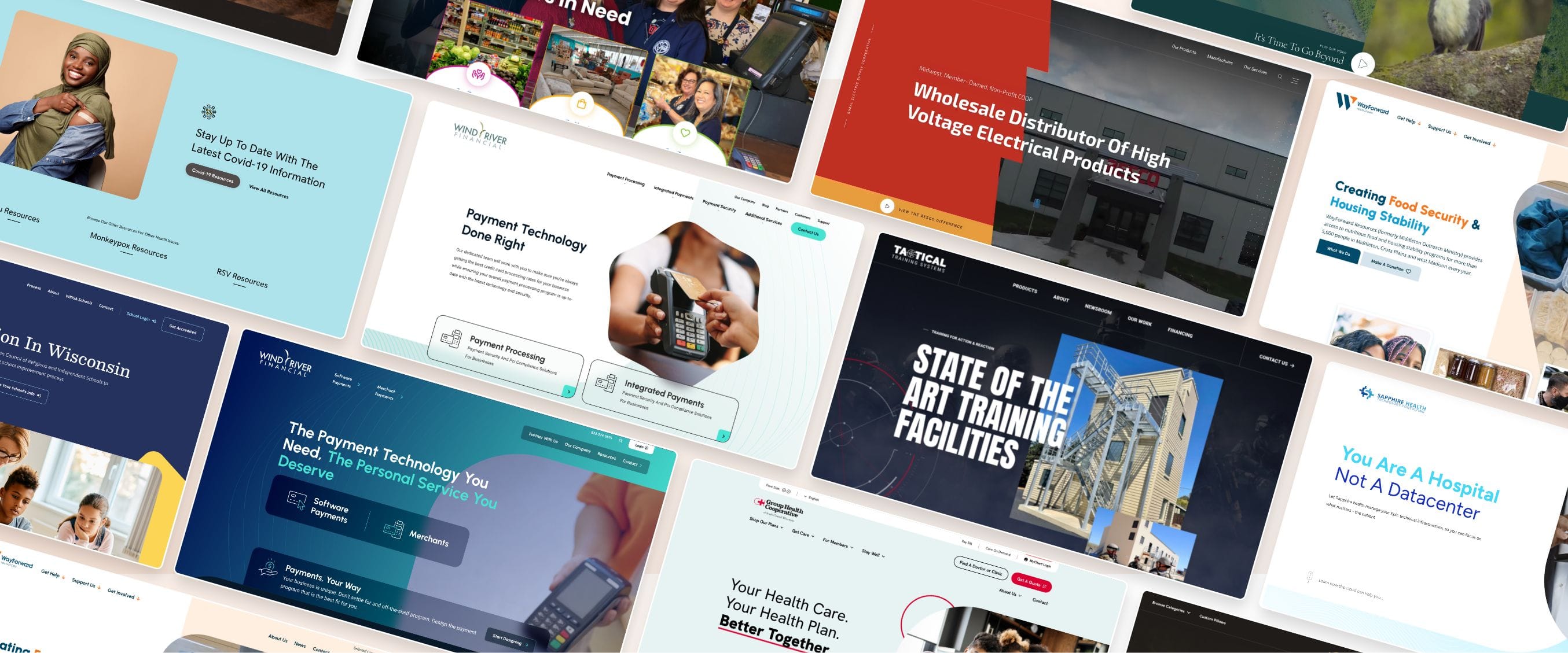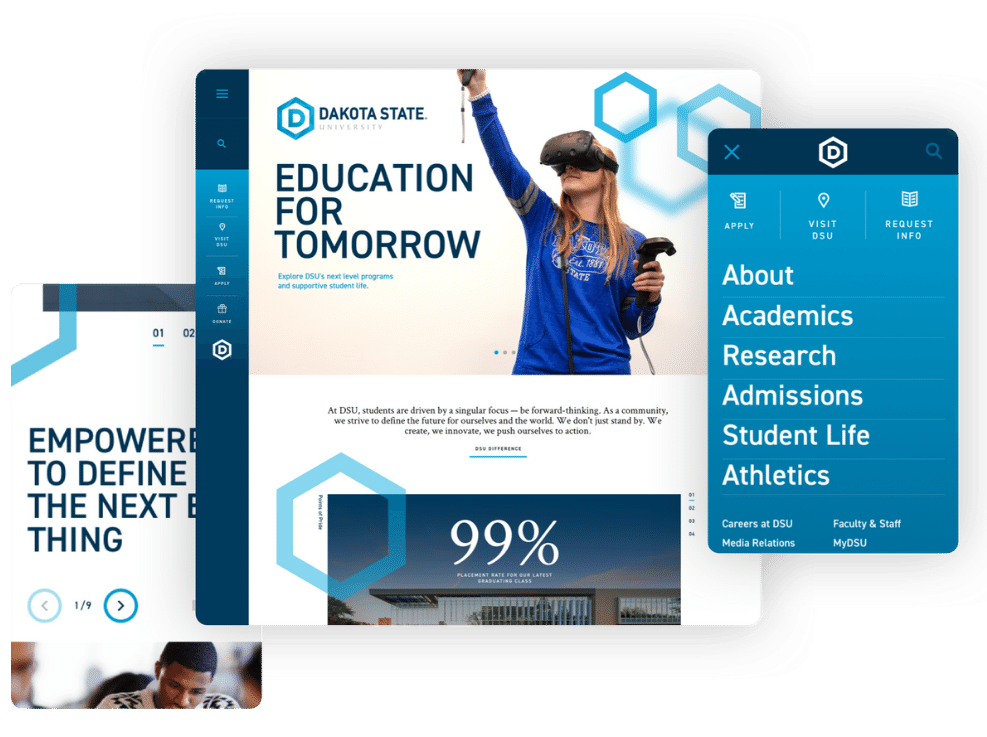Website Design Best Practices for Faster Load Times and Improved User Experience
Website Design Best Practices for Faster Load Times and Improved User Experience
Blog Article
Modern Website Layout That Captures Focus and Converts
In an increasingly digital landscape, contemporary website style has actually arised as a pivotal variable in recording individual interest and driving conversions. As we explore these necessary components, it comes to be clear that understanding their interplay can dramatically impact a site's performance and customer complete satisfaction.
Importance of Visual Hierarchy
Visual power structure is an essential component in site style, as it guides users' focus and enhances their general experience. By tactically arranging material, developers can guide individuals to the most vital info initially, thus raising involvement and enhancing usability.
Integrating a logical circulation in material setup is crucial; for example, placing the most important info at the top of a web page fosters immediate acknowledgment. Constant usage of typography, such as varying font dimensions and designs, aids develop a clear web content structure. This company not just aids in navigation however also builds trust fund, as customers feel a lot more comfy when they can quickly locate what they are searching for.
Eventually, a well-executed aesthetic power structure not only enhances aesthetic charm but also dramatically influences user behavior. By prioritizing important aspects and making sure a seamless experience, designers can efficiently transform visitors into consumers, reinforcing the importance of this fundamental layout principle in contemporary web site advancement.
Responsive Design for All Gadgets
Developing a smooth experience across different devices is essential in today's digital landscape, where users access websites from tablet computers, mobile phones, and desktops alike. Responsive design is an essential approach that guarantees websites adjust fluidly to different screen alignments, dimensions, and resolutions. By employing versatile grids, images, and CSS media questions, developers can develop designs that maintain visual honesty and performance, regardless of the device being used.
The relevance of responsive design expands beyond looks; it directly impacts customer interaction and conversion prices. A web site that functions well on all devices motivates longer visits and minimizes bounce rates, as individuals are most likely to interact with web content that is simple to browse. Moreover, online search engine, particularly Google, focus on mobile-friendly sites in their rankings, making responsive layout a crucial part of search engine optimization (SEO)
Including receptive layout not just improves customer experience yet also streamlines the growth procedure. By creating a single site that works throughout tools, businesses can save time and resources compared to establishing separate mobile and desktop versions. Ultimately, receptive style is a basic approach for modern website style, making certain access and fulfillment for all individuals, no matter their tool.
Involving Interactive Components
While a receptive style prepares for a useful internet site, including interesting interactive elements is critical for recording customer interest and cultivating deeper connections. Website Design. Interactive components, such as computer animations, tests, and clickable infographics, create a more dynamic customer experience, urging visitors to invest even more time on the website
Integrating interactive features can additionally guide customers via complicated info, making it easier to digest content. For instance, interactive sliders can show item variations, while ingrained video clips can give presentations or reviews that resonate even more than static pictures or text. Moreover, gamification strategies, like incentives for engaging or finishing tasks with web content, can improve individual motivation and retention.
Effective usage of interactive aspects not just enriches the customer experience but can additionally cause greater conversion rates. By making interactions delightful and interesting, organizations can grow a feeling of loyalty and depend on with their audience. Nonetheless, Go Here it is important to stabilize interactivity with performance; overly complicated functions might hinder site rate, negatively influencing user fulfillment. Inevitably, incorporating well-designed interactive elements can dramatically elevate a site's effectiveness, driving involvement and conversions in today's affordable digital landscape.
Structured Navigating Practices
Effective navigating is a cornerstone of any successful website, as it straight affects customer experience and material access. Structured navigation techniques make sure that individuals can conveniently locate information, boosting their communication with the site. A well-structured navigating menu need to be instinctive and straightforward, typically including a limited number of primary categories to stay clear of overwhelming site visitors.
To attain these details structured navigation, developers must prioritize an ordered structure that realistically arranges material. Applying breadcrumb tracks can offer customers with context about their present location within the website, permitting smooth backtracking. In addition, using drop-down menus can effectively preserve area while still providing accessibility to subcategories.
Responsive layout is vital, as navigation should be useful across all tools (Website Design). Mobile users, specifically, gain from touch-friendly food selections and collapsible areas that maintain functionality without compromising visual appeals

Efficient Call-to-Action Strategies
A well-crafted call-to-action (CTA) is important for leading individuals toward preferred outcomes on a website, as it motivates them to engage with material or make a purchase. To maximize their performance, CTAs ought to be clear, engaging, and tactically placed throughout the site.
First, use action-oriented language that interacts urgency or value, such as "Obtain Begun," "Sign up with Now," or "Insurance claim Your Discount." This language not only motivates customers but likewise establishes clear assumptions regarding the next steps.
2nd, consider style components; CTAs ought to stand apart aesthetically through contrasting colors, ample whitespace, and prominent positioning. A button that is simple to see and click boosts the chance of user interaction.
Furthermore, personalizing CTAs based upon customer behavior or demographics can considerably boost interaction. Customized messages resonate a lot more with users, driving higher conversion prices.

Conclusion
Finally, contemporary internet site layout highlights the integration of visual pecking order, receptive designs, engaging interactive elements, streamlined navigation, and efficient call-to-action approaches. These components jointly boost individual experience, guaranteeing that site visitors remain engaged and inspired to discover web content even more. By focusing on these layout concepts, companies can dramatically boost customer retention and conversion rates, eventually leading to greater success in the digital landscape. The continuous development of website design highlights its important function in reliable on-line interaction and advertising and marketing.
In an increasingly digital landscape, contemporary internet site style has emerged as a critical element in catching user attention and driving conversions.Aesthetic pecking order is an essential aspect in site layout, as it overviews users' focus and boosts their total experience.The value of responsive layout extends past appearances; it directly affects customer interaction and conversion prices.Integrating responsive layout not only boosts individual experience yet likewise streamlines the growth process. Inevitably, responsive design is an essential strategy for contemporary internet site style, ensuring access and fulfillment for all users, regardless of their tool.
Report this page